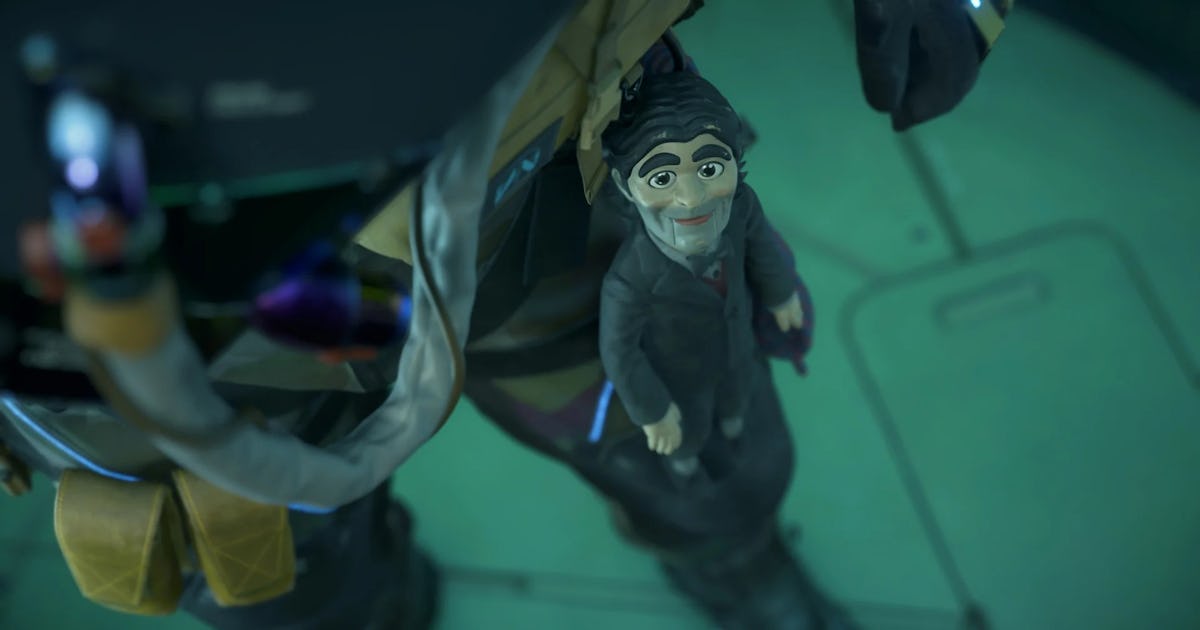If you’ve played any of the big games of the last five years, you’ve probably had the same experience I have — some exhausting sidekick in your ear telling you how to solve every puzzle, pushing you in the right direction if you take even a minute to step off the beaten path. It’s become a genuine problem in so many big-budget games, even games that are pretty universally beloved, like God of War Ragnarok. Naturally, when Death Stranding 2 introduced Dollman as that exact type of character early on, I had some hesitations.
But amidst everything the game does right, I came away most surprised by how much I genuinely loved Dollman. And not just that, but how much he truly feels like he represents the beating heart of a game — transforming the themes of isolation in Death Stranding to ones of camaraderie and understanding. In a game that does so much right, I can’t believe one of its biggest lasting impacts is a little guy whose soul is trapped in a ventriloquist dummy.
Warning: This article will include spoilers for Death Stranding 2.
Dollman works not just as a gameplay tool, but a narrative foil to Sam.
Kojima Productions
In traditional Kojima fashion, part of what makes Dollman such a brilliant character is how metatextual he is. This is a character integrated into both the world and story, but also crafted specifically to be a “sidekick.” Dollman manages to both fill the role of a sidekick and simultaneously be a commentary on the insidious feature at large. That even comes down to how he’s presented in teh world, with Sam attaching Dollman to his belt so he flops along as you run — cheekily exactly like Mimir in God of War.
Dollman does function like so many sidekicks, given a directly gameplay purposes. He occasionally pops in with hints for Sam, and has a feature where you can throw him into the air like a recond drone — something incredibly useful. But these gameplay purposes are continuously layered with narrative context, in the way Dollman almost works like a foil for Sam himself.
Dollman is emblematic of the tonal inconsistency at the heart of Death Stranding, the whiplash seesawing it does between bizarre absurdity and genuine heartfelt emotion. In other games, those tones might clash, but somehow, Death Stranding 2 makes it not just work, but be a defining feature.
Dollman is the quirkiest character in Death Stranding 2, but he also has the most tragic backstory. A perfect encapsulation of the game’s chaotic storytelling.
Kojima Productions
Squarely at the heart of that is Dollman, a weird little puppet with an absurdly tragic backstory. In this story, the sidekick lost his daughter and trapped his own body in a doll to ensure her soul could go on to the afterlife. Every time Dollman comes on screen, he’s animated completely differently, given half the frames of every other character. He stands out like a sore thumb, but all the other characters in the game play it completely straight and sincere — Dollman isn’t a punchline in the slightest. In fact, as you find out more about his role in the overall narrative, he’s actually the most thematically important character.
The first Death Stranding was heavily themed around isolation, and the nature of life and death. Sam travelled a hollowed-out world all by himself, in order to reconnect the siloed lives of everyone. While Death Stranding 2 is still ostensibly about death and grief, it’s also more about trauma and healing. That theme becomes apparent early on after a tragic event steals Sam’s daughter, Lou, from him. For the rest of the game, Dollman is propped up as a foil to the stoic Sam — a weird little guy that, bit by bit, gets Sam to come to a realization.
Dollman is a point for Sam’s fractured-by-grief consciousness to bounce off of, a clear example that the path to healing isn’t through isolation, but connection. This theme is masterfully woven by the relationship between the two.
Sam and Dollman are an almost perfect pair, two drastically different personalities that weave into something special.
Kojima Productions
Whenever you rest in your room aboard the DHV Magellan, you can talk to Dollman as much as you want. These are short dialogue lines, typically about what’s going on in the story, or gameplay hints. But something remarkable starts happening further in the game. The more you travel with Dollman, the more serious and heartfelt these conversations get. Any friction between Sam and Dollman starts to disappear, replaced by real love and caring.
There’s an almost therapeutic edge to the relationship, with the bond between the two directly tied to Sam’s processing of trauma — before the game outright tells you that’s why Dollman is accompanying you.
It’s remarkable how integrally Dollman changes the entire Death Stranding experience. He doesn’t talk too much, but he’s always a grounded voice at the worst of times for Sam — or chiming in with how beautiful a vista looks as you cross a mountain peak. Kojima Productions found the perfect balance of making the character a gameplay tool, and an emergent narrative device. He chimes in at just the right moments to remind you he’s there, but never becomes overbearing.
In this way, Dollman becomes not only a gameplay device but a narrative one. He’s a direct representation of the healing process after experiencing the death of a loved one. It’s almost like the relationship between the id and the ego, with Dollman acting as the latter for Sam — a way to help him regain control of his emotions and rational thought.
If you play the song “Horizon Dreamer” in Sam’s room, you might even see a little Dollman Easter Egg.
Kojima Productions
That feels exactly what this new trend of sidekicks should try and embrace, not just gameplay devices or characters in the story, but a way to really reinforce the game’s themes and message.
Dollman plays directly into Death Stranding 2’s commentary on trauma, and how important connection is. Sam can’t go things alone, and neither should you — no matter what form that takes.
Death Stranding 2: On the Beach is available on PS5.
Source link
Video Games,PlayStation,gaming,playstation,opinion,homepage,hp-latest,open-world,death-stranding,adex-light-bid




Average Rating